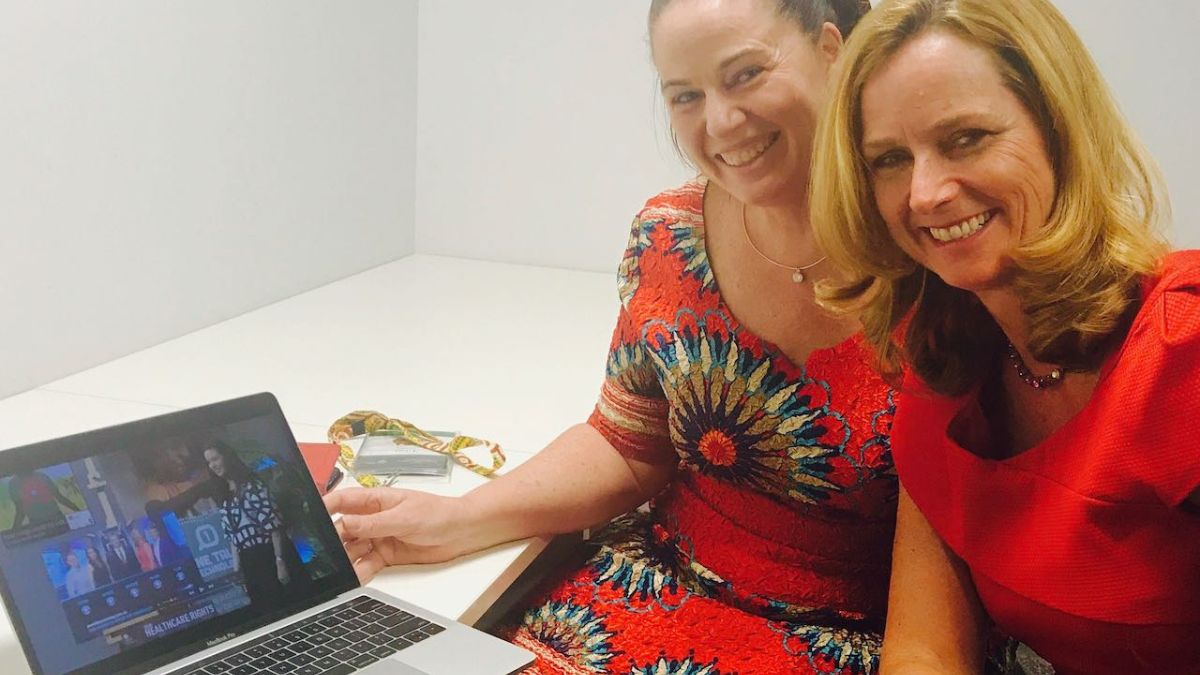The Startup Capital Conundrum
There is a moment that every single founder faces. It's a moment of profound conflict. On one hand, you have an idea that burns with possibility, a vision for a product or service that you know, deep in your bones, the world needs. On the other hand, you have the stark, cold reality of an empty bank account.
This is the startup capital conundrum. It is the great chasm that separates a brilliant dream from a thriving business. And the question of how to bridge that chasm is one of the most consequential, and most anxiety-inducing, that an entrepreneur will ever ask.
For the last decade, we've been fed a single, dominant narrative from the tech world: the only way to bridge that gap is to raise venture capital. The story is a familiar one—a polished pitch deck, a whirlwind of investor meetings, and a massive cheque in exchange for a significant slice of your company.
I am here to tell you that not only is that not the only way, but for the vast majority of new businesses, it is absolutely the wrong way.
Having dedicated over four decades to the intricate world of business—from the initial spark of creation to the meticulous processes of funding and strategic investment—I have cultivated a profound and actionable philosophy on capital. This philosophy didn't emerge from theoretical constructs but from the gritty realities of entrepreneurship, like the bootstrapping of RedBalloon from my own living room with my last $25,000. It was forged in the high-stakes crucible of hearing hundreds of pitches as a "Shark" on Shark Tank.
At its core, this philosophy is anchored by three fundamental pillars: control, sustainability, and a deep, unwavering respect for equity.

Control is paramount. It dictates that you, as the founder and driving force, maintain a firm grip on your vision and the strategic direction of your company. This means carefully considering the terms of any investment, understanding the implications of dilution, and ensuring that external capital serves your long-term objectives rather than dictating them. Losing control, even in the pursuit of rapid growth, can transform a promising venture into a mere extension of an investor's portfolio, stripping away the very essence of your entrepreneurial spirit.
Sustainability underpins every financial decision. It moves beyond short-term gains and focuses on building a robust, resilient business capable of weathering economic fluctuations and market shifts. This involves judicious allocation of resources, responsible debt management, and a clear understanding of your burn rate versus your revenue generation. A sustainable funding strategy prioritises profitability and healthy cash flow over an insatiable pursuit of growth at any cost, recognising that true success is built on enduring strength, not fleeting hype.
Finally, and perhaps most crucially, is a profound and deep respect for equity. Your equity is not merely a percentage; it is the embodiment of your hard work, your innovation, your sacrifice, and your future potential. It is the most valuable asset you will ever own in your business. Every decision regarding funding, every new investor, every stock option granted, must be weighed against its impact on this precious asset. To give away equity lightly is to diminish your own stake in the future you are painstakingly building. This respect fosters a meticulous approach to valuation, a careful selection of partners, and a clear understanding of the true cost of capital.
These principles—control, sustainability, and an unwavering respect for equity—form the bedrock of a funding approach that empowers entrepreneurs to build enduring, impactful businesses on their own terms, rather than being beholden to external pressures. It’s a philosophy born from experience, proven in practice, and designed to safeguard the integrity and future of every venture.
Today, I want to give you a real, unfiltered, founder's-eye view on securing a business loan for your startup. We will go far beyond a simple list of products. We will start by asking the tough question of whether you should be seeking funding at all. We will demystify the landscape of startup loans in Australia, give you a practical checklist to get "loan ready," and provide a clear framework for making the right capital decision for your unique journey.
This is not a banker's guide. This is a founder's playbook.

The Most Important Question - "Do You
Before we talk about interest rates and loan applications, we must have a brutally honest conversation. The biggest mistake I see early-stage founders make is believing that their first step is to seek external funding. They become obsessed with raising capital before they have answered a much more important question: "Have I created any value yet?"
In the hierarchy of funding, there is a clear and powerful order. To skip a step is to put your entire venture at risk.
Level 1: Bootstrapping (The Non-Negotiable Start)
The first, best, and most important investor in your business must be your customer. The process of bootstrapping—starting with your own limited resources and funding your growth from your first sales—is not a sign of failure to raise money. It is the ultimate sign of a sound business model.
I built RedBalloon on this principle. That first $25,000 wasn't for a fancy office or a big team. It was the absolute bare minimum required to build a Minimum Viable Product (MVP) and get it in front of a real, paying customer. Every dollar of profit from those early sales was poured directly back into the business.
Bootstrapping is a crucible. It is incredibly difficult, but it forges an unbreakable business.
- It forces discipline. When every dollar is your own, you question every expense.
- It forces creativity. With no budget, you find scrappy, ingenious ways to market and sell.
- It forces you to validate. You cannot survive unless you build something people actually want to pay for, right now.
Before you even think about a loan, have you done everything in your power to bootstrap your way to your first ten, fifty, or one hundred paying customers? Have you proven your concept in the real world?
Level 2: Non-Dilutive Debt (The Strategic Accelerator)
This is the world of business loans. I call it the strategic accelerator. A loan is not "free money." It is fuel. You only pour fuel into an engine that is already running. Taking out a loan to fund an unproven idea is like taking on a mortgage to buy a house based on a rough sketch. It is financial suicide.
Level 3: Dilutive Equity (The Rocket Fuel)
This is the world of angel investors and venture capital. This is rocket fuel, designed for a very specific type of vehicle: a high-risk, high-growth, "moonshot" business with the potential for a massive global outcome. It comes at the highest possible cost: a piece of your company, forever.
This article is focused on Level 2, because for 99% of new businesses, it is the most appropriate and powerful next step after you have exhausted the possibilities of Level 1.

The Right Time for a Loan - When Debt Makes Strategic Sense
So, when is the right time for a startup to consider a business loan? It is when you have a proven, repeatable system for turning $1 into $2, and you need capital to do more of it, faster.
A business loan should not be for "survival." It should be for a specific, measurable growth opportunity.
- To Fund a Confirmed Purchase Order: You've landed a huge order from a major retailer, but you need cash to buy the inventory to fulfil it. This is a perfect use for a short-term loan.
- To Purchase a Critical Piece of Equipment: Your artisan bakery has a waitlist for your sourdough, but you're limited by your oven's capacity. A loan to buy a bigger oven that will immediately increase your production and revenue makes perfect strategic sense.
- To Bridge a Cash Flow Gap: You provide services to large corporate clients who pay their invoices in 60 or 90 days. You need cash to pay your staff and suppliers this month. A specific tool like an overdraft or invoice finance can bridge that gap.
- To Scale a Proven Marketing Channel: You've discovered that for every $1 you spend on a specific type of Google Ad, you generate $4 in sales. You have maxed out what you can afford from your cash flow. A loan to scale that ad spend is a calculated, data-driven investment in growth.
The golden rule is this: you must be able to clearly articulate exactly how the borrowed funds will generate more than enough revenue to comfortably service the debt and create a profit.
Decoding the Startup Loan Landscape in Australia - A Founder's Translation
The world of business finance can be a confusing mess of jargon. Let's translate the most common types of startup business loans into plain, practical English.
- Unsecured Business Loans: This is the "trust me" loan. You are borrowing without putting up a specific physical asset like a house as collateral. Because the lender's risk is higher, the interest rates will be higher, and the loan amounts will typically be smaller. This is often the first port of call for a young business with a year or two of trading history and solid revenue, but few physical assets.
- Secured Business Loans: This is the "I have assets" loan. You are using a valuable asset—most commonly a commercial or residential property—as security for the loan. This significantly reduces the lender's risk, which means you can usually access larger amounts of capital at a much lower interest rate. The trade-off is obvious: if the business fails, your personal asset is at risk.
- Business Overdraft: This is the "safety net" loan. It's a facility linked to your business bank account that allows you to go overdrawn up to a pre-approved limit. It's not designed for long-term investment but is perfect for managing the natural lumps and bumps of cash flow—paying a big supplier bill a week before a large client payment comes in.
- Equipment Finance (Chattel Mortgage or Lease): This is the "specific purpose" loan. You are borrowing money to buy a specific piece of equipment, and the equipment itself acts as the security for the loan. This is a fantastic, lower-risk way to finance the essential tools you need to grow, from a new delivery van to a state-of-the-art 3D printer.
- Invoice Finance (or Debtor Finance): This is the "get paid now" loan. It’s a brilliant tool for B2B businesses. Instead of waiting 60 or 90 days for your big clients to pay, a lender will advance you up to 80-90% of the invoice value immediately. They then collect the full payment from your client and pay you the balance, minus their fee. It is a powerful way to unlock the cash that is tied up in your accounts receivable.
- Government-Backed Loan Schemes: Keep an eye out for these. The Australian Government periodically offers schemes (like the SME Recovery Loan Scheme of the past) where it guarantees a portion of the loan, encouraging banks to lend to businesses they might otherwise consider too risky. These can be a fantastic entry point for startups.
Getting "Loan Ready" - How to Think Like a Lender
Before you approach any lender, you must do your homework. A lender is not your friend; they are a risk manager. Your job is to present a case that is so clear, so professional, and so compelling that lending to you feels like a smart, low-risk decision. This is your pre-flight checklist.
- Your Blueprint & Financials (The Plan): You don't need a 100-page business plan, but you do need a clear, concise document that outlines your business model, your target market, and your growth strategy. Most importantly, you need your financial house in order. This means professionally prepared financial statements (P&L, Balance Sheet) and, crucially, a detailed cash flow forecast. This forecast is your promise: it shows how you will manage your money and how the loan will be comfortably repaid.
- Your Traction & Proof of Concept (The Past): A lender is betting on your future, but they will judge you on your past. This is where your bootstrapping efforts pay off. You need to be able to show them the evidence: a growing list of customers, positive testimonials, increasing monthly revenue. You must prove that your business is a real, functioning entity, not just a good idea.
- Your Personal Credit History (The Person): For a young business, the lender is betting on the founder as much as the company. They will look at your personal credit score. It's an unavoidable reality. A history of responsible personal financial management is a powerful signal that you will be a responsible business borrower.
- The "Use of Funds" Statement (The 'Why'): Be crystal clear. You must be able to state, in a single, compelling paragraph, exactly what the money is for and how it will generate a return. "We are seeking a $50,000 loan to purchase a new coffee roaster. This will allow us to increase our production capacity by 300%, fulfil our new contract with a major distributor, and is projected to increase our net profit by $80,000 in the first 12 months." That is a case a lender can understand and support.
A Shark's Perspective - The Debt vs. Equity Dilemma
On Shark Tank, founders came to me asking for an equity investment. But in many of my off-air conversations and in the deals I ultimately structured, we often talked about debt. Why? Because as I have said for years, for the right business, debt is always cheaper than equity.
Let me make this incredibly clear.
That 20% stake you gave away is now worth $400,000. The cost of that $50,000 was not just $50k; it was a significant portion of your life's work.
This is not to say equity is always bad. It is the right choice for a certain type of high-risk, high-potential business where you need not just the capital, but the strategic expertise and network of a true partner to help you shoot for the moon.
But for the vast majority of sustainable, profitable, growing businesses, debt is a far smarter tool. It allows you to accelerate your growth while protecting your most precious asset: your ownership.

Funding is a Tool, Not The Goal
Navigating the world of startup funding is one of the most daunting challenges a founder will face. The pressure to "raise a round" can be immense.
I want you to resist that pressure. I want you to reframe the conversation.
The goal is not to raise money. The goal is to build a great, sustainable, and profitable business. Funding is simply a tool to help you get there, and it must be used with care, with strategy, and with a clear understanding of the true cost.
Validate your idea first. Bootstrap with a relentless focus on your customer. And when the time is right, view a business loan not as a last resort, but as a powerful, strategic tool to accelerate your proven success, all while keeping you firmly in control of the company you are pouring your heart and soul into.
You are the architect of your destiny. Choose your tools wisely.





